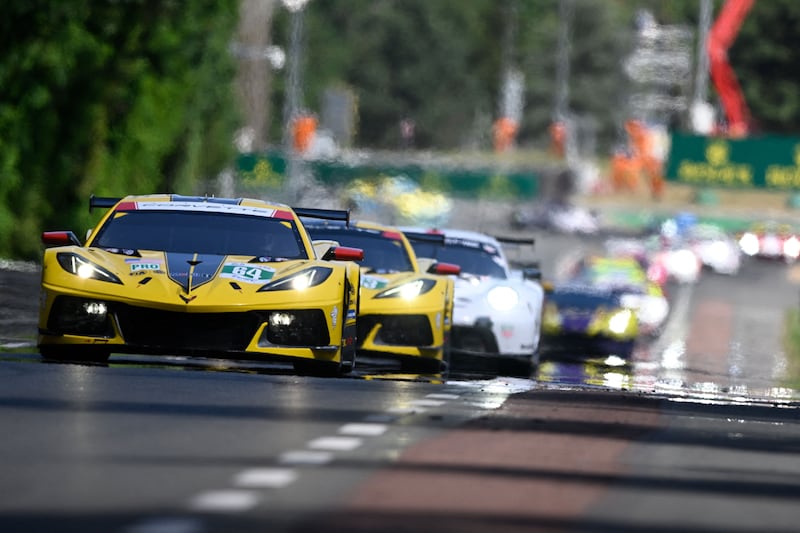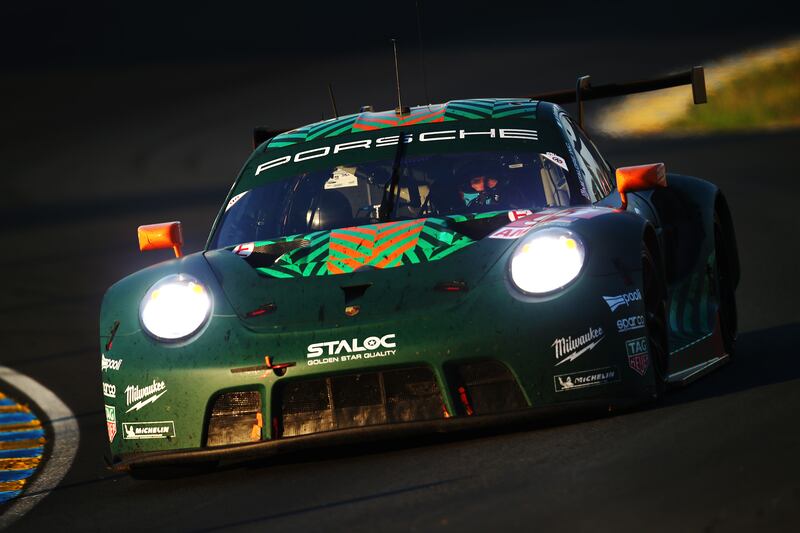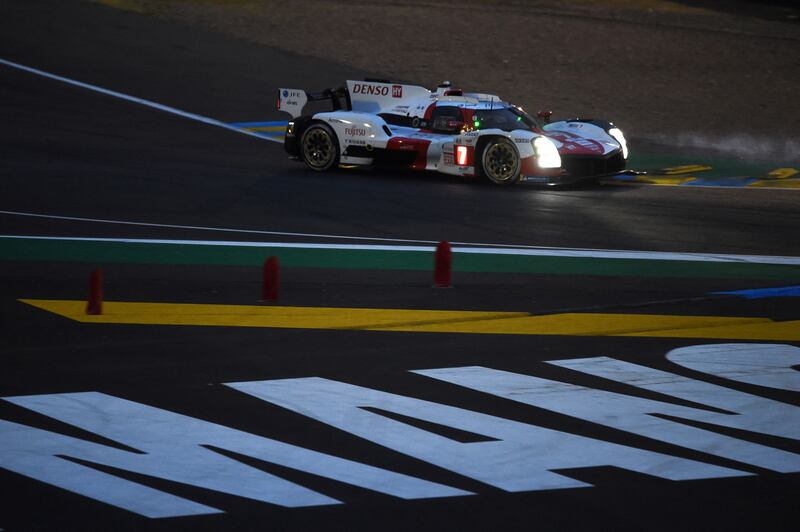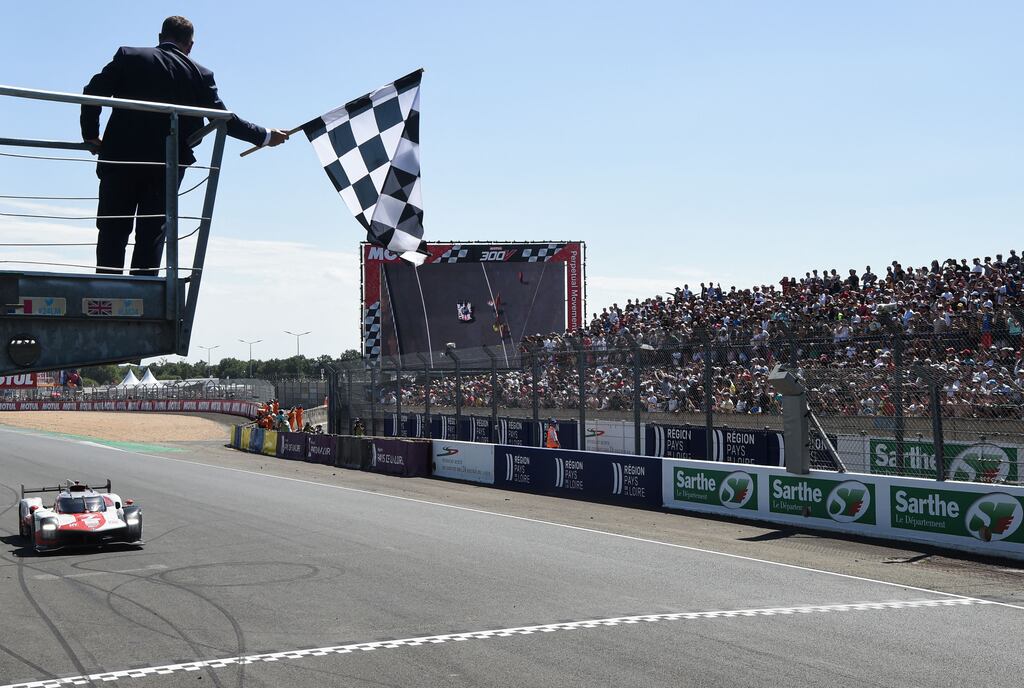Glance at the results of the 2022 running of the Le Mans 24hrs — the 90th edition of the race, in the year before it celebrates its centenary — and you might well think that all was is it was. Toyota won the big prize, taking the overall win in the Hypercar category, Le Mans’ top racing class. Porsche took the top spot in the road-car-based (nominally, at any rate…) GTE Pro class, while UK-based sports car specialists Jota Racing took the win in the second-string LMP2 category.
However, the headline results do not speak of the nuance in how the race panned out — for many of the cars that won their classes, it was less a case of drive to survive, more a case of survive long enough to keep driving. There is much for existing and incoming teams to consider here as Le Mans heads for its 100th year, and an explosion of competition in the Hypercar class.
Let’s start with the GTE Pro class, though. 2022 was the last running of GTE Pro, as there aren’t enough factory-backed entries for Le Mans, or the World Endurance Championship, to run the category next year. In 2024, GTE will switch to the more popular GT3 car specification, which opens it up beyond the current supply of cars from Porsche, Ferrari, Corvette, and Aston Martin to encompass the likes of Lamborghini, Bentley, Mercedes, McLaren, Audi and many more.

Porsche has been a regular winner in the GTE category since its inception, but for once the mighty Stuttgart squad lucked into the win. Corvette has dominated the class this year, and while its No.63 car — driven by Antonio Garcia, Jordan Taylor and Nicky Catsburg — had suffered catastrophic suspension failure that put it out of the race, its sister No.64 car — shared by Nick Tandy, Tommy Milner and Alexander Sims — was running hard and fast, and had taken the lead of the class from Porsche.
READ MORE
The Porsche squad itself had been hobbled by a puncture for its fastest entry, the No.92 car driven by Kevin Estre, Michael Christensen and Laurens Vanthoor, but in a spectacular incident early on Sunday morning, that car’s right-front tyre blew, and the flapping sheets of rubber removed most of the front-end bodywork from the Porsche.
Corvette looked set fair, until with only six hours of the race to run, a wayward LMP2 car made a mistake on the ultra-fast Mulsanne Straight. Swerving to avoid another car, the AF Corse LMP2 car of Francois Perrodo seemed only to lightly tap the side of the 64 Corvette, but at speeds approaching 270km/h, it was enough to pitch the bright yellow machine into the barriers, smashing the front suspension, and putting the ‘Vette out on the spot. A distraught Alexander Sims had to walk out of sight of the TV cameras to compose himself before helping trackside marshals to recover the car.
What should then have been a fight between Porsche and Ferrari for GTE spoils was itself spoiled by the fact that the race organisers, wary of Ferrari’s high top-end speed, had used the Balance Of Performance regulations to insist that Ferrari turned down the wick on its cars’ turbochargers. As happens so often, a rule designed to enforce fairness worked too well, and the Ferraris were pegged back. Porsche’s No.91 car, driven by Gianmaria Bruni, Richard Lietz and Frederic Makowiecki, strolled to an all-but default victory, and the last for a fully-professional team in the class. From next year, all GTE teams will have to have at least one amateur driver.

One amateur driver in particular was causing waves in the Le Mans paddock, as Hollywood superstar (and Kerry native) Michael Fassbender made his 24hrs debut. Driving for the already-star-studded Dempsey Proton team (co-owned by Patrick Dempsey, best known to audiences as a heart-throb doctor from Grey’s Anatomy), Fassbender was racing a Porsche 911 painted in a distinctive matte green, with orange flashes.
Sadly, that green didn’t bring him much luck, although the consensus was that Fassbender drove well (notwithstanding a heavy crash in qualifying), certainly well enough to make this more than just an actorly vanity project. He crashed again, at the fearsome Indianapolis corner, but that was because he’d been struck by another car. Eventually, that car would finish a lowly, but relatively unbowed, 51st. Another Irish driver in the field, Ryan Cullen, shared the Vector Sport LMP2 car with multiple Indycar champion Sebastian Bourdais, but mechanical trouble meant that team finished only in 27th place overall, and 22nd in class.
The class was won by the Np.38 Jota Sport car, raced by Antonio Felix da Costa, Roberto Gonzalez and Will Stevens, and that continued a long run of success in the category by Jota. However, they came perilously close to being beaten by the brand-new Prema team. Prema is best-known for entering teams in Formula Two racing, but on its first outing at Le Mans it found fine performance from its trio of drivers, including F1-refugee Robert Kubica alongside Louis Deletraz and Lorenzo Colombo. With fellow LMP2 debutant Penske (yes, the Penske of Indycar legend, running in the category to gain experience before taking on the Hypercar class with Porsche next year), the second-tier category produced some of the best racing of the whole weekend, and Jota will be looking anxiously over its shoulder for next year.
So too will Toyota. It may not seem like it — the two Toyota TS010 racing cars, with their hybrid engines, took the top two steps of the podium, finishing five laps ahead of the third-placed car from independent US team Glickenhaus.

However, there were some stumbles — notably for the No.7 Toyota, of Jose Maria Lopez, Mike Conway and Kamui Kobayashi which stopped briefly out on track, and then had to return to the pits to have a failing hybrid system reprogrammed. Because the car’s battery and high-voltage electric system was still live, pit personnel couldn’t actually touch the car, so its software was updated and re-set remotely — never say that modern racing doesn’t have road-car relevance.
It was, in the scheme of the race, a relatively small incident, but Toyota’s incoming Hypercar rivals for 2023 will be licking their collective lips in anticipation. Neither the Glickenhaus team, nor Alpine — still using an older design of car, allowed to run in order to make up the numbers — had the pace to punish Toyota’s miss-step. Next year, with Peugeot, Ferrari, Porsche, and Cadillac (with a possible appearance by BMW) all entering the top category, that won’t be the case. Indeed, even Glickenhaus, running two Hypercar entries on a budget that wouldn’t pay for Toyota’s sandwiches, managed to keep the Japanese giant honest, pumping in seriously fast lap times in the race’s latter hours.
Toyota has dominated Le Mans since 2018, and while there hasn’t been especially strong competition for the top spot in that period, it would be disingenuous to say that Toyota has had things easy — at Le Mans, the race itself is as much a competitor as any other car. However, the salad days of Toyota coming into the race as the presumed favourite are now over. Peugeot has won the great race three times before, while Ferrari — which hasn’t competed in Le Mans’ top category since 1973 — has taken nine outright wins (and almost-innumerable category wins). Porsche has won the 24hrs 19 times outright.
Against a field of that class, Toyota will have its work cut out retaining its crown, but the Japanese squad is relishing the chance for serious competition. So too are we all.















